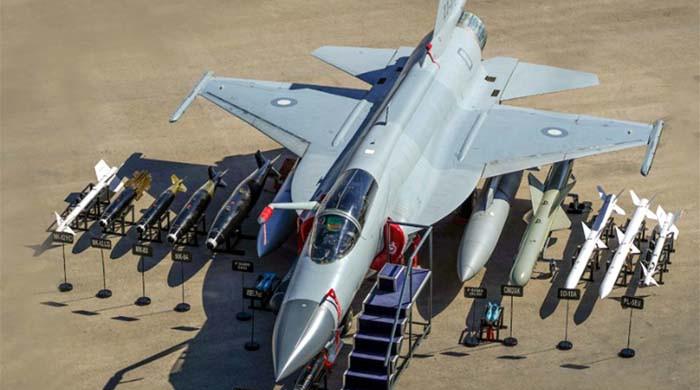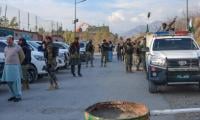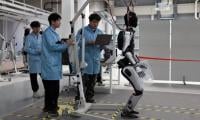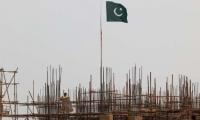CPEC: Myths and Realities
CPEC is considered to be an opportunity that will be stimulus to our economic growth and will usher a new era of industrial development in Pakistan. The financial picture being portrait vis-à-vis its finances are far from real.
The recent article “CPEC-An unfair deal for common Pakistanis?” by a European foundation is full of misperceptions and misgivings, mostly based on partial and incorrect information. One is appalled to see how a singular frame has been applied to the CPEC by such a reputed organization, which seems to indicate rather an effort to particularly target such a significant development initiative. CPEC is considered to be an opportunity that will be stimulus to our economic growth and will usher a new era of industrial development in Pakistan. The financial picture being portrait vis-à-vis its finances are far from real.
The report contains incorrect information vis-à-vis CPEC finances, cooperation in Energy, development of Gwadar, and opportunities created by this mega-project. It rather concentrates on the negative biased information.
The finances of CPEC are not limited to loan, as it include grants, loans and Foreign Direct Investment (FDI). Energy projects are being executed under Independent Power Producers (IPPs) mode. This means that financing of energy projects are mainly taken by the private company from China Development Bank and China Exim Bank against their own balance sheets, therefore, any debt would be borne by the Chinese investors instead of any obligation on part of the Pakistani government.
Around $35 billion energy projects with capacity of 17000 MW are being executed under IPP mode–a policy of Government of Pakistan for the last 15 years that caters to all private power producers and investors. NEPRA, the regulatory body has not given unusually high tariffs to any IPP investor under CPEC. No surcharges in account of security for CPEC are being added to electricity bills above the agreed tariff.
Moreover, around $15 billion are allocated for infrastructure projects and development of Gwadar. Most of the projects in Gwadar are being implemented through Chinese grants. Only a few projects in infrastructure sector are implemented with the help of Chinese interest free loans/ government concessional loans which Pakistan has to repay in the next 20 to 25 years with around 2% interest rate. Moreover, eminent economists and financial analysts have estimated that after the completion of CPEC projects, the outflows may take an average pattern, that year by year $0.9 billion would be added and a peak of $3 to $3.5Billion may be reached in the year 2023 and then a decreasing pattern may take place going forward.
However, on the other hand, these CPEC projects are easing the energy and infrastructure bottlenecks and the annual gains are estimated in the range of $Billions. Moreover, with improved environment exports are already ticking up with improvement in the situation of electricity and a 14% increase in exports is estimated.
Another repeated narrative being built against Gwadar port is its comparison of Sri Lankan’s Hambantota Port which also needs to be understood in the correct perspective. In fact, both the ports are not similar in context of its different modes of financing. Gwadar Port concession agreement is grant-based Build Operate Transfer (BOT) contractual agreement which relieves Government of Pakistan of the responsibility to pay back the company or Government of China. While Hambantota concession agreement was a debt-equity swap agreement. The port holding company has to invest $5 billion to develop and ensure best management of the Gwadar Port. Moreover, the Gwadar Port and all its fixed developed assets will be transferred to Gwadar Port Authority after 2048. Development of Gwadar will result in great economic activities not only for the people of Pakistan but also for the adjoining region.
The Government is fully aware of the job opportunities created by CPEC and all steps are being taken to ensure human development in line with the government’s vision. The project has created more than 70,000 high paid jobs for local skilled and non-skilled workers in its Early Harvest Phase phase. It is estimated that the cooperation in the industrial sector would further create around 1Million jobs for Pakistani youth, who stand to be the top beneficiaries. Both federal and provincial governments are keen to capitalize on the opportunity, therefore huge investment is being made in the skill development sector. The technical institutes at federal and provincial levels are involved in the implementation of different projects aligned with CPEC job opportunities.
The Higher Education Commission is currently working on a detailed plan to develop around 50 faculties/technical centres in different universities that would address the need for human development for CPEC. Besides, Pakistan and China have established a consortium of top business schools on both sides to ensure the development of high-quality human resource through academic linkages in the field of finance and trade. HEC is further linking 50 Pakistani universities with Chinese counterparts to ensure educational exchanges and transfer of knowledge for the betterment of human resource development in Pakistan. In addition to these efforts NAVTEC, the apex body of the Government of Pakistan for technical and vocational training, has executed numerous skill development programs that are designed to commensurate with the needs of latest skill demands of construction, energy, industry, agriculture,horticulture, health and nutrition and service sector of the local and international market. The development plan under CPEC has been shared with the Chinese side during last JWG meeting on Industrial Cooperation. This initiative would further support human resource development for CPEC.More than 20,000 students are currently enrolled in Chinese universities. These skilled and highly qualified youth would have a better chance to get employment in CPEC projects, as well as in general. This mega project has provided an opportunity to bringing a high talent back to country to counter the issue of brain drain.
It is a mere allegation that Pakistani markets would be flooded by Chinese products. Not just Pakistan, all the world including the Western countries import Chinese products, keeping in view the quality and competitiveness. Pakistani products too need improvement in order to reduce the trade deficit. CPEC provides this opportunity to increases competitiveness for goods in the local market, providing an incentive for local businesses to produce high quality products. Special Economic Zones (SEZs) under CPEC will cater the needs of the local businesses and Small Medium Enterprises (SMEs). The zones provide an opportunity for local businesses to enter into Joint Ventures (JVs) with Chinese counterparts and treat their knowledge on the location (culture, land and market) as an asset. Furthermore, Pakistan is also engaged with China to revise Free Trade Agreement (FTA) that would support more Pakistani products to reach into Chinese markets, thus addressing the issue of trade deficit.
It is baseless to assert the claim that local communities have been neglected in land acquisitions for CPEC projects. Government of Pakistan has ensured land acquisitions as per existing laws through Provincial Governments, who purchases the land from the local inhabitants – which are well compensated, as per the set procedure. There is no major issue over land compensation and leasing all across Pakistan.
The report has tried to project cultural implication of CPEC, naming it as “cultural invasion.” This myth has already been debunked as it has been revolving in the certain media channels for some time. Around 10,000 Chinese are working on CPEC projects while a similar number are engaged in non-CPEC initiatives. As compared to Pakistan, millions of Chinese are living in US, UK and other countries without significant cultural transformation of their respective local societies. So, how a mere20,000 Chinese nationals would altogether transform Pakistan traditional and historical society? This is an irrational and baseless argument.
Pakistan and China are all-weather and time-tested friends. CPEC is a fusion of Vision 2025 and China's One-Belt One-Road philosophy. Both the nations have been tied into strategic partnership for decades. CPEC brings forth a transformational paradigm, moving from geo- strategic to geo-economic partnership between the two countries. China's huge investment in energy, infrastructure and industrial sectors does not provide any extra ordinary mileage to either of the partnering countries rather it offers a win-win situation and equal opportunities to both China and Pakistan. Hence, there is no need to compare CPEC with East India Company. China is investing to help Pakistan to improve socio-economic indicators through development and prosperity.
CPEC development is in parallel with the Vision 2025 of Pakistan in which “inclusive development” remains a flagship of this vision. CPEC has created an opportunity to mainstream remote areas of Pakistan. Moreover, CPEC is equally benefiting all provinces through various projects and SEZs.
The Belt and Road Initiative (BRI), of which CPEC is a flagship project, opens up new vista of corresponding opportunities for the whole region, with Pakistan being one of the prime beneficiaries. It will provide an integrating platform for over three billion people in Central, West and South Asia, the Middle East and Africa. The increase in trade, investment and financial flows would bring peace and prosperity to the region through enhancement in the competitiveness of the economies of the countries; contribute to reducing regional disparities and social inequality; and improve life expectancy and quality of life in Pakistan and in the adjoining region. Through CPEC the region will be integrated into an economic hub promising a great future for its populace.
CPEC has provided enormous opportunities for Pakistan to grow economically. It is an engine for economic growth and will increase Pakistan’s GDP up by 2% to 3%. CPEC has also facilitated in overcoming crucial energy, transport infrastructure and supply chain bottlenecks. Under CPEC, development of Gwadar would ensure strengthening of maritime sector particularly the coastal tourism and local fishery industry thereby benefitting the local communities.
The development of agriculture sector along modern lines and better water resource management would pave way for food security in the country. Creation of industrial parks and improvements in supply chains would lead to improvement in export performance and lead to sustainable economic development.
The linkages through CPEC are improving tourism, human resource development, transfer of knowledge and technology besides developing new urban centers in the country which is leading towards a true inclusive growth. The impact of such development initiatives is visible from the fact that Pakistan is transforming into a better place for foreign investors and countries including UK, France, Central Asian Republics, as well asMiddle East States are eager to become a part of this multi-billion-dollar project.
---------------------------------------------------------------
Hassan Daud Butt is PD CPEC at the Ministry of planning and a Projects’ management specialist and a faculty member of Projects Management Dept. at various institutes/universities. He has also served as diplomat in China and Vietnam and is a recipient of Commemorative Medal from Chinese Ministry of Defence. He can be reached at hdb4049@gmail.com













